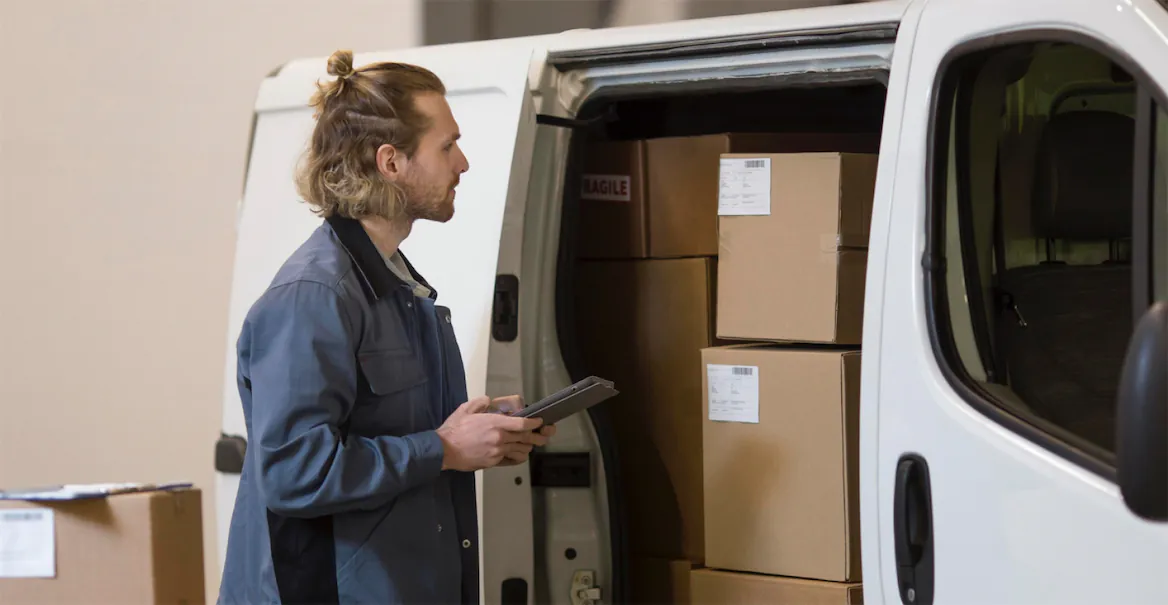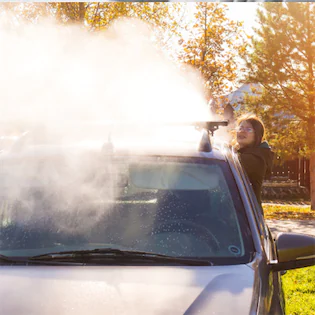The primary purpose of lemon law is to hold manufacturers accountable for the quality of their products and ensure that consumers are not left with defective vehicles. The law requires manufacturers to repair, replace, or refund the cost of lemon vehicles, providing a safety net for consumers.
The Song-Beverly Consumer Warranty Act, commonly known as California’s lemon law, was enacted in 1970. It aims to protect consumers from defective products and ensure fair treatment in the marketplace.
Over the years, the Act has been expanded and refined to cover a broader range of vehicles and provide more comprehensive protections for consumers, including business owners with commercial vehicles.
Types of Commercial Vehicles Covered Under California’s Lemon Law
California’s lemon law covers various types of commercial vehicles, including:
- Trucks and Vans: Used for delivery, transportation, and logistics.
- Construction Vehicles: Such as bulldozers, excavators, and other heavy machinery.
- Service Vehicles: Including taxis, shuttle buses, and maintenance trucks.
The law applies to both new and used commercial vehicles that are still under the manufacturer’s original warranty.
Key Protections Under California’s Lemon Law for Commercial Vehicles
Coverage and Eligibility
To qualify for lemon law protection, a commercial vehicle must meet the following criteria:
- Substantial Defects: The vehicle must have significant defects that impair its use, value, or safety. These defects should be documented and must persist despite repair attempts.
- Reasonable Repair Attempts: There must be a reasonable number of attempts to repair the vehicle. Typically, this means:some text
- At least two attempts for serious safety defects.
- Four or more attempts for other substantial defects.
- Time Out of Service: The vehicle has been out of service for repair for a cumulative total of 30 days or more.
- Timeframe: The defects must occur within the first 18 months or 18,000 miles of ownership, whichever comes first.
Manufacturer’s Obligations
Requirement to Repair, Replace, or Refund a Defective Commercial Vehicle
- Repair: The manufacturer is obligated to attempt repairs within a reasonable number of attempts. If the defect persists, further action is required.
- Replace: If the manufacturer cannot repair the defect, they must replace the vehicle with a comparable new one.
- Refund: Alternatively, the manufacturer can refund the purchase price of the vehicle, including the cost of any additional warranties or service contracts.
Consumer Rights and Remedies
Rights of Business Owners Under the Lemon Law
- Right to Repairs: Business owners have the right to a reasonable number of repair attempts by the manufacturer or authorized dealer.
- Right to Replacement or Refund: If the defects are not resolved after a reasonable number of attempts, business owners are entitled to either a replacement vehicle or a refund of the purchase price.
- Right to Compensation: Business owners may also be entitled to compensation for incidental costs, such as towing and rental fees, incurred due to the defective vehicle.
Common Issues in Commercial Lemon Vehicles
Mechanical Problems
Persistent Engine Issues
- Stalling: Frequent stalling can indicate significant engine problems, which can be particularly disruptive and dangerous for commercial vehicles used in business operations.
- Overheating: Overheating issues can lead to severe engine damage if not addressed promptly, impacting the vehicle’s reliability and performance.
- Starting Difficulties: Difficulty starting the vehicle can be a sign of underlying engine or electrical problems, leading to frequent downtime and lost productivity.
Transmission Problems
- Difficulty Shifting: Problems with shifting gears smoothly can indicate transmission issues, affecting the vehicle’s ability to operate efficiently, especially under load or in varying driving conditions.
- Slipping Gears: If the transmission slips out of gear unexpectedly or fails to stay in gear, it compromises the vehicle’s drivability and safety.
Electrical and Electronic Failures
Recurring Battery Failures
Persistent battery issues can severely impact the reliability of a commercial vehicle. These problems might be due to defects in the battery itself or the vehicle’s charging system.
Lighting Malfunctions
Issues with the vehicle’s lighting system, including exterior lights, interior lights, or dashboard lights, can pose safety risks and hinder operations, especially for vehicles used at night or in low-visibility conditions.
Electronic Control Issues
Modern commercial vehicles often feature advanced electronic controls for various functions. Malfunctions in these controls can affect critical systems like navigation, communication, and operational diagnostics, leading to operational inefficiencies.
Safety and Structural Concerns
Brake Failures
Brake issues are a significant safety concern for any vehicle, especially commercial ones. Problems such as brake failure, uneven braking, or excessive brake wear can lead to accidents and legal liabilities.
Steering Problems
Defects in the steering system, such as difficulty steering, loose steering, or vibrations, can pose serious safety risks and affect the vehicle’s maneuverability, which is crucial for commercial operations.
Structural Defects
Issues with the vehicle’s frame, such as cracks, weak spots, or poor construction, can compromise the structural integrity of the vehicle. These defects can be particularly dangerous for commercial vehicles carrying heavy loads or operating in demanding environments.
Steps to Take if You Suspect Your Commercial Vehicle is a Lemon
Documenting Defects and Repair Attempts
Keeping detailed and organized records is crucial when dealing with a potential lemon vehicle. Documentation provides the necessary evidence to support your claim and shows that you have made reasonable efforts to resolve the defects. Thorough documentation helps establish a clear timeline of events and the persistence of the defects, which is essential for proving that the vehicle meets the criteria for a lemon under California law.
Types of Records to Keep
- Repair Orders: Collect all repair orders from each visit to the service center. These should detail the issues reported, diagnostics performed, and repairs attempted.
- Receipts: Keep all receipts related to repairs, even if covered under warranty. These receipts can demonstrate the financial and time burden caused by the defect.
- Communication Logs: Save all forms of communication with the dealer and manufacturer, including emails, letters, and phone call logs. Note the dates, names of representatives you spoke with, and key points discussed.
Notifying the Dealer and Manufacturer
How to Formally Notify the Dealer and Manufacturer of the Issues
- Written Notification: Formally notify both the dealer and the manufacturer in writing as soon as you identify a recurring defect. Clearly describe the issue, provide a timeline of the problems, and include copies of your repair records. Be specific about the defect’s impact on the vehicle’s use, value, or safety.
- Certified Mail: Send your notifications via certified mail or another method that provides proof of delivery. This ensures there is a record of your notification and that the dealer and manufacturer cannot claim they were unaware of the issue.
Importance of Written Communication and Proof of Correspondence
- Creating a Record: Written communication creates a formal record of your efforts to resolve the problem. This record is essential if you need to escalate the issue to a lemon law claim.
- Proof of Attempts to Resolve the Issue: Keeping proof of correspondence demonstrates that you have made reasonable attempts to have the vehicle repaired. This is a key requirement for a lemon law claim and helps establish that the manufacturer has had sufficient opportunity to fix the defect.
Seeking Repairs and Resolution
Options for Getting the Commercial Vehicle Repaired Under Warranty
- Authorized Repair Facilities: Always take your vehicle to an authorized repair facility specified by the manufacturer or dealer. This ensures that the repairs are recognized under your vehicle’s warranty. Authorized service centers have the necessary expertise and parts to address specific issues covered by the warranty.
- Warranty Coverage: Verify that the repairs are covered under your vehicle’s warranty. This includes parts, labor, and any diagnostics required. Ensure that all repair orders clearly state that the work is performed under warranty to avoid unexpected costs.
Steps to Take if Repairs Are Unsuccessful
- Multiple Repair Attempts: If the defect persists after the first repair attempt, return the vehicle to the authorized service center for further repairs. California’s lemon law typically requires that a reasonable number of repair attempts are made before the vehicle qualifies as a lemon. Document each attempt meticulously.
- Communicate with Manufacturer: If the authorized repair facility cannot fix the issue after several attempts, escalate the problem to the manufacturer. Contact their customer service department and provide all relevant documentation. Request a resolution, such as additional repairs, replacement, or refund.
Filing a Lemon Law Claim
To file a lemon law claim, gather all necessary documentation, including repair orders, receipts, and correspondence with the dealer and manufacturer. Submit a formal claim to the manufacturer, outlining the defects and your repair attempts. If the manufacturer does not respond or fails to resolve the issue, you may need to escalate the claim to an arbitration or mediation process.
Required Documentation and Evidence
- Repair Records: Detailed repair orders and receipts showing the persistent defects and repair attempts.
- Communication Logs: Written correspondence with the dealer and manufacturer demonstrating your efforts to resolve the issue.
- Proof of Purchase: Documentation showing the purchase date, vehicle identification number (VIN), and warranty coverage.
- Independent Mechanic’s Report: A detailed report from an independent mechanic diagnosing the defects can strengthen your claim.









